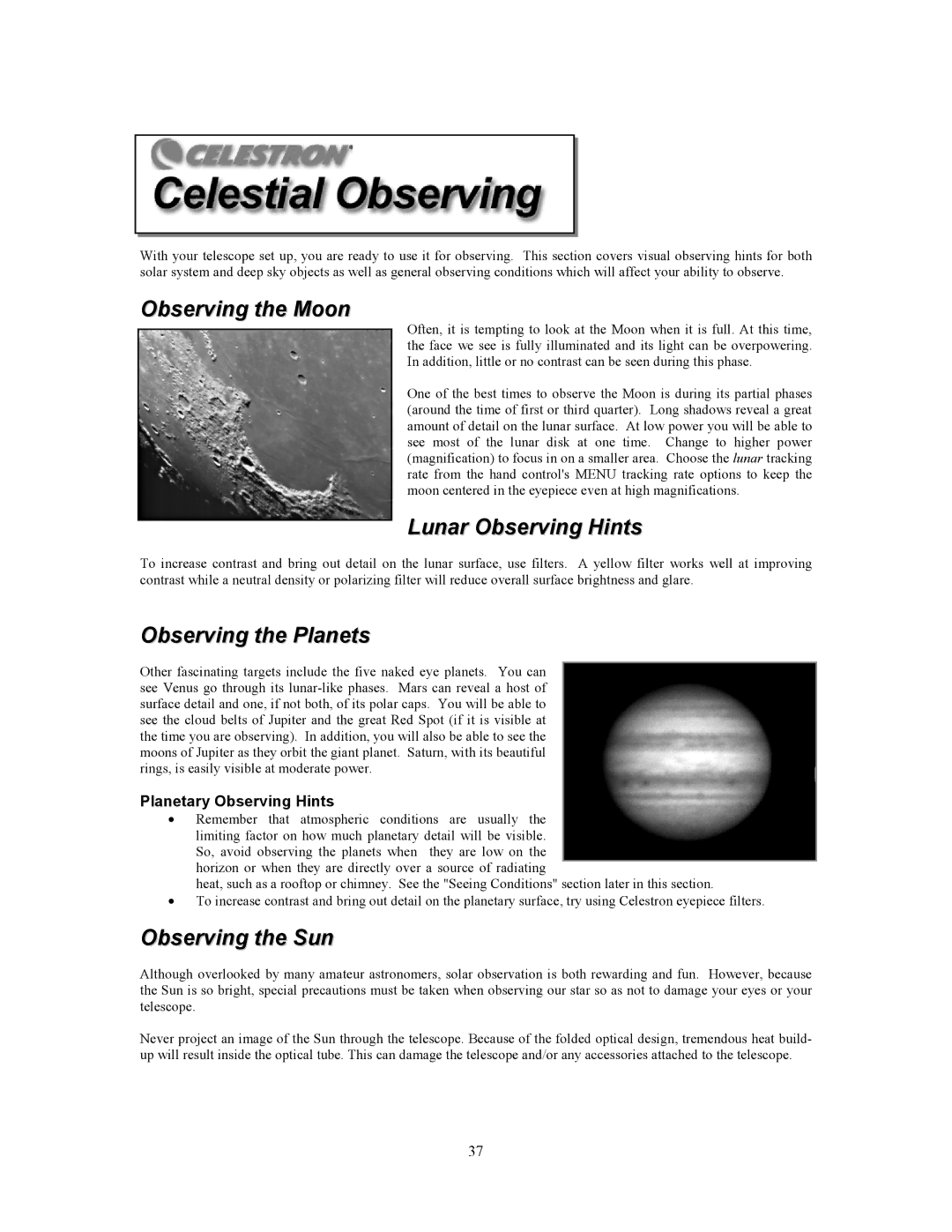C10-N, C8-NGT, C8-N specifications
The Celestron C8-NGT, C8-N, and C10-N telescopes represent a range of superior astronomical instruments that cater to both novice and experienced astronomers alike. Among these, the C8-NGT combines the advanced features of a computerized telescope with the simplicity of a Newtonian design. Its 8-inch aperture allows for impressive light-gathering capability, making it ideal for observing distant galaxies, star clusters, and nebulae. The GoTo mount enhances usability, enabling users to locate celestial objects effortlessly with the push of a button.The C8-N, also featuring an 8-inch aperture, stands out with its open tube design that provides maximum airflow and minimizes thermal issues, ensuring optimal performance. The scope is designed with user-friendly adjustments and a sturdy equatorial mount, allowing for smooth tracking of celestial objects. Its high-quality optics provide sharp images and incredible clarity, making it suitable for both planetary and deep-sky observations.
On the other hand, the C10-N is the largest in this lineup, boasting a 10-inch aperture that dramatically enhances its light-gathering ability. This larger size makes the C10-N a powerhouse for serious astronomers looking to explore fainter objects and intricate details within astronomical features. Like the C8-N, it employs a Newtonian reflector design, allowing for a compact and manageable profile, while still providing stunning visuals across a range of celestial bodies.
All three telescopes incorporate Celestron's commitment to creating durable, robust, and user-friendly systems. They utilize premium quality glass and optics, which are coated to improve light transmission and provide high-contrast images. Additionally, they are designed with ease of assembly and portability in mind, catering to astronomers who enjoy observing in various locations.
The Celestron C8-NGT, C8-N, and C10-N serve as excellent options for anyone looking to deepen their astronomical pursuits, offering a blend of advanced technology, high-quality optical performance, and user-friendly features. Whether you're a beginner eager to peer into the wonders of the universe or an experienced observer at the peak of your skills, these telescopes offer a remarkable means to expand your cosmic horizons. With precision engineering and thoughtful design, Celestron continues to be a trusted name in the world of astronomy.

